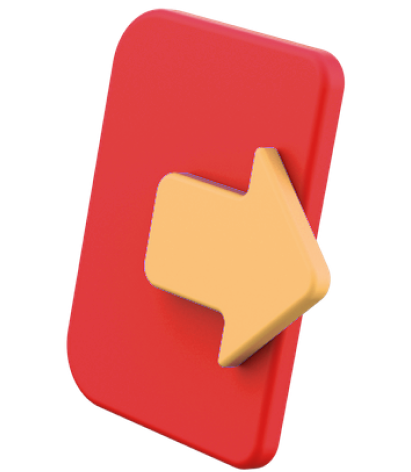19 April 2025
8 minutes read
How To Write A Statement Of Purpose For Masters In Product Design?

Key Takeaways
- Write a standout statement of purpose for product design by being clear, real, and focused on your journey—not just your portfolio.
- Understand what top design schools actually look for and tailor your SOP to match the mindset of each program.
- Use real experiences, specific goals, and honest intent to show why you’re ready for a master’s in product design.
Only 1 in 5 applicants to top design programs submit a standout SOP.
That’s not a guess — it’s what admissions committees admit off-record. The rest? They drown in vague goals, buzzwords, and generic storytelling. Most applicants think their portfolio will carry them. It won’t. If your statement of purpose doesn’t reflect your design skills, mindset, and problem-solving DNA, you’re invisible.
I personally believe that writing a strong SOP for a Master’s in Design is not just about sounding smart. It’s about being real — showing you get design, not just as a skillset, but as a way of thinking. So if you’re struggling to articulate your journey, connect your work experience with your future, or explain why graphic design isn’t your endgame — you’re not alone. But you need to fix it. Fast.
6 Key Elements To Write A Statement Of Purpose For Masters In Product Design
Let’s get one thing straight — the admissions committee doesn’t care about fancy words or overdone storytelling. They want clarity, intent, and proof that you understand what you’re walking into. Whether you’re applying to the Parsons School of Design or any of the top design schools, your statement of purpose for masters is a pitch — your best shot at showing you’re serious about entering the design field.

Here’s what your SOP for design must include:
1. A Clear Why — Your Real Reason to Pursue Design
Don’t dance around it. Start your SOP for masters in design by answering why you want to pursue a career in product, interaction, or interior design. Talk about the spark — maybe a design project, a challenge, or a turning point outside of school. This is where you connect passion with direction. Skip the fluff, stick to what motivated you to pursue this path.
2. Your Academic Background (But Keep It Relevant)
No one wants a CV dump. The program you’re applying to cares about how your academic background supports your future career goals. Mention relevant coursework, design methods you’ve explored, or any design and technology focus that shaped your perspective. If you’re a non-native English speaker, make sure your writing is sharp and clear — that’s part of the impression too.
3. Design Work & Real-World Experience
Your professional experience matters more than you think. Talk about design work, internships, or how you worked in the field on complex projects. Show how you contributed as a team member, made smart design decisions, and learned design methodologies on the job. Bonus points if you’ve seen the product development process or applied human-centered design principles.
4. Your Thought Process — Not Just What You Did, But How
A strong statement of purpose reflects how you think. Don’t just list what you did. Break down your design process, highlight the design thinking behind it, and walk through your approach. This helps show how you arrive at effective design solutions and handle the development process. It’s what separates a doer from a thinker — and UX designers from visionary product designers.
5. Why This Program? Why Now?
Be honest about why this master’s program matters to you right now. Whether it’s the opportunity to learn from leaders in the design industry, work on complex projects, or gain advanced knowledge and specialized skills in product design, be specific. Mention how the program aligns with your future career objectives, especially if you’re applying to elite schools like Parsons.
6. Keep It Crisp, Real, and Within Limits
Submit a statement that respects the word limit and doesn’t read like a sample SOP. Avoid overused phrases from every sample statement of purpose online. Instead, write like a real person — someone eager to hone their craft and apply to the program because it excited you about the opportunity. The design world respects authenticity — and so do the designers in the world reviewing your SOP.
10 Top Universities In The World To Pursue Product Design
You may have to draft a statement of purpose differently depending on the university you’re applying to. Not all programs expect the same tone, structure, or even emphasis. For example, a statement of purpose for master’s in design at the Parsons School of Design may lean heavily on design thinking and creative direction, while a program at Stanford might care more about your design methodologies and development process. That’s why knowing where you’re applying — and how to write your statement of purpose for design — is half the battle.

Here are the 10 top universities in the world where you would want to study product design:
| University | Location | Average Tuition (USD/year) | Avg. Graduate Salary (USD/year) |
|---|---|---|---|
| Stanford University | USA | $56,000 | $92,000 |
| Massachusetts Institute of Technology (MIT) | USA | $55,510 | $95,000 |
| Royal College of Art | UK | $39,000 | $70,000 |
| Rhode Island School of Design (RISD) | USA | $57,505 | $68,000 |
| Parsons School of Design | USA | $51,000 | $67,000 |
| Delft University of Technology | Netherlands | $18,000 | $62,000 |
| University of the Arts London (UAL) | UK | $25,000 | $60,000 |
| ArtCenter College of Design | USA | $50,000 | $70,000 |
| Carnegie Mellon University | USA | $58,924 | $90,000 |
| Umeå Institute of Design | Sweden | $18,000 | $65,000 |
2 Personal Statement Examples That Almost Always Work
Even the most talented designers in the world struggle to put their thoughts into words when it’s time to write a statement of purpose. Especially if you’re a non-native English speaker, organizing your journey — from graduating from university to your goal of developing a career in product design — can feel overwhelming. That’s where a solid sample personal statement comes in.
Here are samples that can help you write better SOP:
Sample SOP 1: For a Candidate With Industry Experience Looking to Pivot into Product Design
Use this if you’ve worked in design (graphic, interior, etc.) or a related creative field and want to move into product design through a master’s degree in design.
Three years into working at a fast-paced digital agency, I realized that good design isn’t just how it looks — it’s how it works. My background in visual communication gave me the tools to make things beautiful. But I kept feeling something was missing: function. Purpose. Strategy. That’s what motivated me to pursue a Master’s in Product Design.
After graduating from university with a degree in graphic design, I joined a branding firm where I worked on visual identities for early-stage startups. It was here I began asking questions not many graphic designers around me were asking: Why are users dropping off? Why is this interface clunky even though it looks clean? That curiosity led me to work in the design field beyond just aesthetics — collaborating with product teams, shadowing UX leads, and eventually leading a design project that involved building a clickable prototype for a fintech app. I wasn’t just pushing pixels anymore. I was solving problems.
What excites me about this master’s program is the emphasis on human-centered design, real-world complex projects, and the opportunity to build specialized skills in product design. The program would help me sharpen my design methodologies, understand the product development process, and work alongside peers who challenge me. I’m especially eager to take courses in interaction design and design and technology — areas I’ve explored outside of the classroom but want to ground in formal training.
Being a non-native English speaker has also taught me how to listen more, observe more, and communicate clearly — all of which have shaped my ability to collaborate and thrive as a team member. I believe this degree program would give me the structure and feedback I need to grow from a visual designer into a product thinker. I’ve seen how strong products are built, and now I want to build them better — with intention.
Long-term, my goal of developing meaningful, user-driven digital products aligns with what this program will allow me to do. I’d love to take what I learn here and work at a design company that values thoughtful, inclusive design. This program is not just the next step — it’s the right one.
Sample SOP 2: For a Final-Year Student or Recent Graduate with Limited Industry Experience
Use this if you’re applying straight out of university, with projects, internships, or passion-led work as your main experience.
Throughout my undergraduate years, I’ve found myself obsessing over the smallest design details — not just how something looks, but how it’s used, understood, and felt. While studying Industrial Design, I realized I wasn’t just interested in building things — I was interested in building experiences. That’s what motivated me to pursue a Master’s in Product Design.
As someone graduating from university soon, I may not have years of professional experience, but I’ve used every opportunity I could find outside of the classroom to push myself. I led a semester-long design project that reimagined classroom furniture for flexible learning. I took online bootcamps to understand design thinking and interaction design. I worked on a freelance basis with a nonprofit to design a mobile-first donation flow — an experience that taught me more about user experience than any textbook could.
This degree program would offer the depth and mentorship I haven’t yet had access to. I’m eager to take advanced courses in design methodologies, prototyping, and usability testing — areas I’ve only scratched the surface of. The program would help me build a strong foundation in the design process, giving structure to my curiosity and turning raw skills into refined, effective design solutions.
Being a non-native English speaker has been a challenge in fast-paced studio critiques, but it’s made me a better visual communicator. I’ve learned to translate ideas through sketches, flows, and interactions. I know I’ll need to work harder to stand out among the best designers in the world, but I’m ready for that.
Long-term, my goal of developing inclusive, real-world digital products that scale keeps me focused. I’d love to take the thinking I’ve started and evolve it in a space where design meets technology, creativity meets methodology. I’m confident this program will allow me to grow into the kind of designer who not only asks the right questions but creates the right answers.
Conclusion
Most people overthink their statement of purpose. They try to sound impressive instead of being clear. But clarity wins. Always. If you’re applying to a master’s program in product design, your SOP isn’t a creative writing exercise — it’s a proof of intent. You’re telling a school why this path makes sense for you, and why now is the right time.
So be real. Don’t aim for perfection. Aim for alignment — between who you are, what you’ve done, and where you want to go. That’s what makes a strong SOP. Not a checklist. Not buzzwords. Just a clear story with purpose.
Most applicants struggle to write a perfect statement of purpose but end up sounding arrogant — but you won’t. At Ambitio, our AI-powered study abroad experts help you craft a powerful, standout statement of purpose that gets noticed. No fluff, no clichés—just a compelling story that proves you belong. Schedule a call with Ambitio’s experts.
FAQs
What is a statement of purpose (SOP) for product design?
A statement of purpose for product design is a document that outlines your motivations, goals, and qualifications for pursuing a program or role in product design. It typically explains your design philosophy, relevant experiences, and what you hope to achieve in the field
How is a statement of purpose different from a design mission statement?
A statement of purpose is a personal document focusing on your individual aspirations and fit for a program or job, while a design mission statement is usually organizational, outlining a team’s or company’s present design objectives, principles, and values
What should I include in my SOP for product design?
Include your reasons for choosing product design, relevant academic and professional experiences, your design philosophy, specific skills, and how the program or role aligns with your career goals. Mentioning user-centered design, innovation, and collaboration is often recommended
How long should a product design SOP be?
Most institutions or employers expect an SOP to be 500–1,000 words, but always check specific requirements. It should be concise, focused, and free of unnecessary details.
How can I make my SOP stand out for product design?
Highlight unique experiences, showcase your problem-solving abilities, and provide specific examples of past design projects. Demonstrate your understanding of user needs and your commitment to impactful, user-centered design
Do I need to mention specific design tools or methods in my SOP?
While not mandatory, mentioning familiarity with relevant design tools, methodologies (like user research or prototyping), or frameworks can strengthen your SOP by showing practical skills alongside your design thinking
Should I address challenges or failures in my product design SOP?
Yes, briefly discussing challenges or failures and what you learned from them can demonstrate resilience, growth, and a realistic understanding of the design process—all valued qualities in product design

You can study at top universities worldwide!
Get expert tips and tricks to get into top universities with a free expert session.
Book Your Free 30-Minute Session Now! Book a call now




























